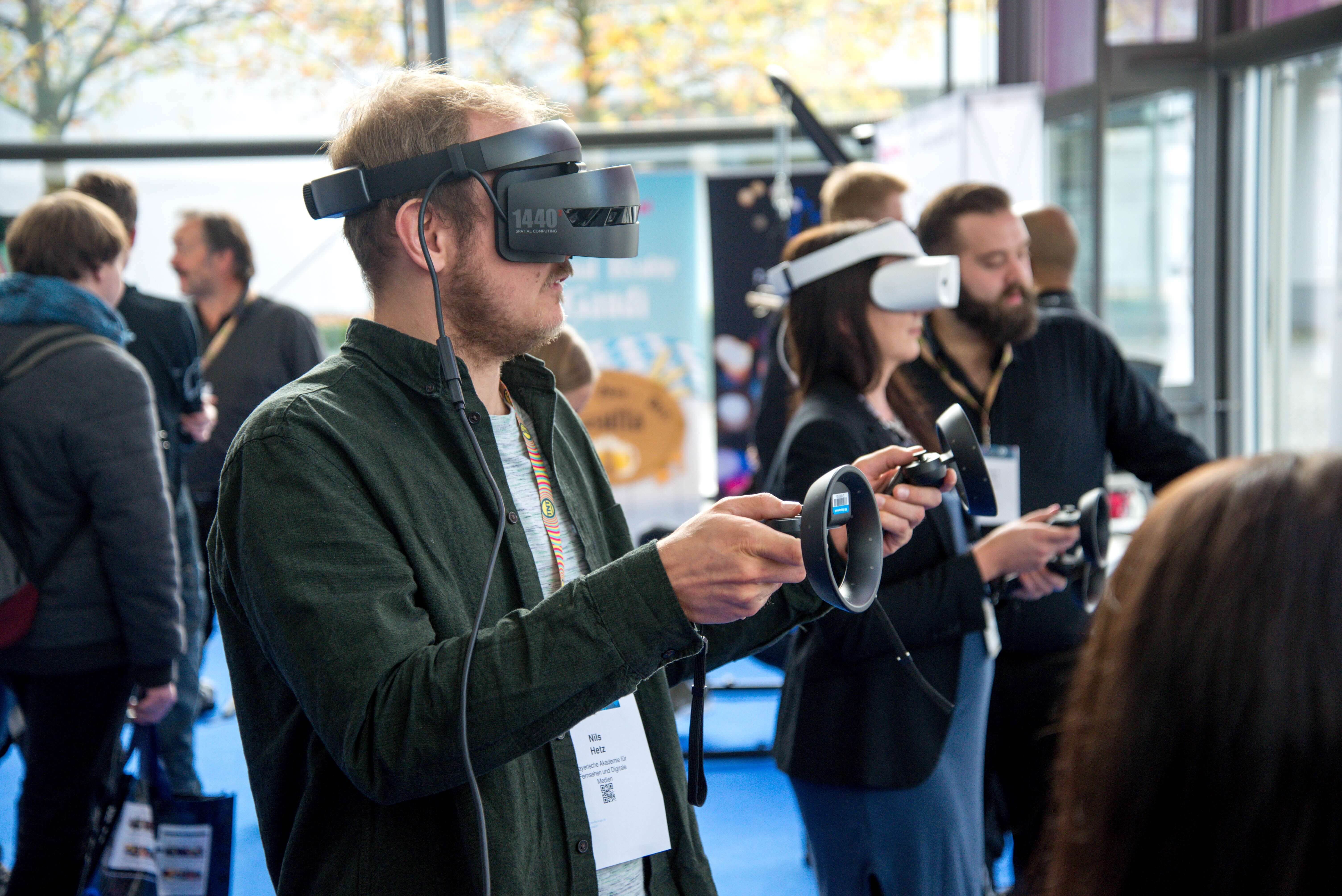Since 2016, mobile has been the biggest segment in gaming and it’s only growing - outpacing PC and console use as current gamers become more engaged and with the continued adoption of smartphones in emerging markets. For many users, immersion is a key factor in their enjoyment of games, movies, TV series, and more - just think of Netflix’s latest venture into interactive television.
With VR and AR coming to mobile, gamers are now able to completely immerse themselves in the games they play. VR and AR gaming are already showing great potential - we haven’t been able to put down Harry Potter: Wizards Unite since it was released last month.
What are mobile AR and VR games?
Virtual reality immerses users in an artificial environment - typically incorporating additional sensory elements such as sound. The goal of VR? To create a simulated experience that can’t be distinguished from a live experience. Using VR devices, gamers can be transported into imagined environments where they can, for example, slay a dragon, ride a magic carpet, and so much more.
The goal of AR is to alter or to add virtual elements to a live view or current reality through the use of a camera (think: Pokemon Go or Snapchat lenses). Augmented reality is a term used to describe the combination of real and virtual worlds.
Mixed reality combines elements of both AR and VR, where real-world and digital objects interact. VR and AR - and the combination of the two - exist with the intent of serving users an enhanced or enriched experience.
Mobile VR headsets: Consumer adoption of VR technology
Consumer adoption for VR has been slower than expected. This is because the high cost of mobile VR headsets (upwards of thousands of dollars). However, cheaper and more technologically advanced headsets such as the Oculus Quest are starting to hit the market. Additionally, the majority of internet users just don’t have the kind of speeds required to stream VR videos. However, the power of 5G networks could very well be the push VR needs to make this tech mainstream.
How does augmented reality work on mobile?
AR has more potential for mainstream success. Why? First off, accessibility. With AR games, gamers don’t need to purchase any additional equipment in order to utilize the technology - effectively making the barrier to entry non-existent. In a recent study, Newzoo found that in the US, of the gamers who have played AR games more than once, 53% of them play on mobile, compared to 28% with VR games.
Moreover, with far more users playing games on mobile, there is a larger user base, making it far easier for AR to catch on. Remember Pokemon Go? Forbes called it one of the most successful mobile games of all times, breaking records like the most-downloaded game in the first month of release, and becoming the fastest game to generate $100M in revenue.
Lastly, it will become cheaper and easier to produce AR games rather than VR games. This is because Niantic - the creators behind Pokemon Go and Harry Potter: Wizards Unite - are in the process of developing the Niantic Real World Platform. This product promises to deliver sophisticated technology to “power-limited mobile devices.” If Pokemon Go and the latest Harry Potter game are any indication into the future of AR, we would argue that the low developing costs of producing AR games will propel AR titles into the mainstream.
What apps use augmented reality?
Simply put, AR consumer devices are AR-capable smartphones. As of December 2018, over 2000 apps mention ARcore or ARkit in their descriptions on both iOS and Google Play. In fact, 79% of Americans surveys who experienced AR in the last 6 months used it to play games.
Take a look at the most downloaded AR apps in 2018 according to Newzoo's latest VR/AR study.
iOS

Source: Newzoo
Google Play
 Source: Newzoo
Source: Newzoo
How AR and VR can help move brands in-app
90% of a user’s mobile time is spent inside apps, of which 50% of those apps are games. We’ve long been saying in-game is the next frontier for brand advertisers, and AR ads could very well be the push that bring brands in-game.
Today, successful advertising campaigns don’t end with the creation of a beautiful and engaging creative. Advertisers must create ads that combine data, creativity, and cutting-edge technology. AR ads do just this by creating a much more immersive and data-driven ad experience.
Think of Nike and Ikea’s latest AR apps. These apps engage users to test out their products using AR technology. Imagine if brand advertisers were to advertise in apps using a user-initiated ads that allowed users to say, try on a watch by simply pointing the camera on their phone to their wrist? Advertisers would then have actual data that shows how many users, and what kind of users were interested in the product they were advertising.
The next forefront in gaming
Gaming has always served as a way for users to immerse themselves in new worlds, realities, and environments, and VR and AR technology is a new way to enhance overall experience in games. Mobile gaming has successfully exposed users around the world to VR and AR. And as the technology evolves, we’re sure that more and more users will begin playing these types of games.




